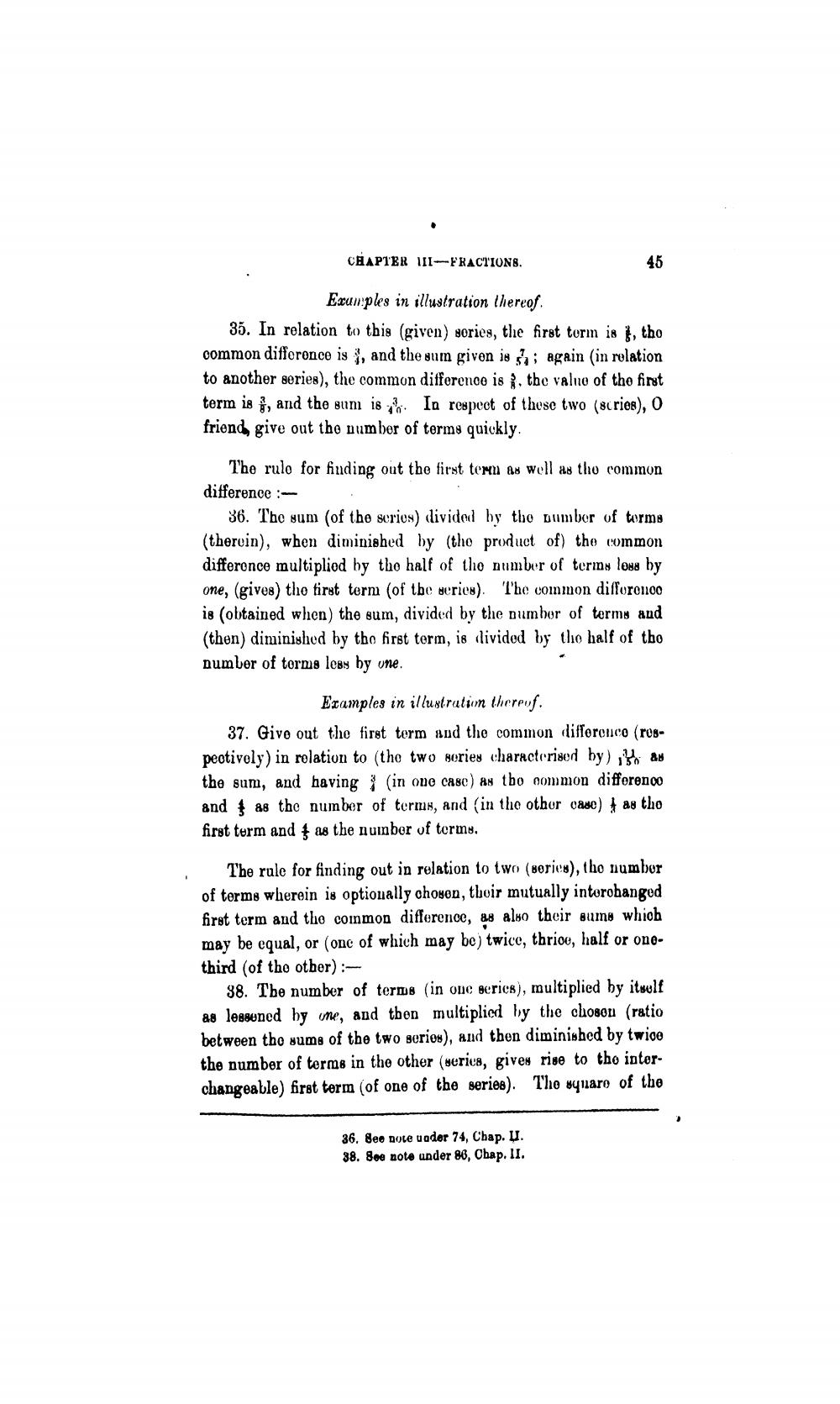________________
CHAPTER HI-FRACTIONS.
45
Examples in illustration thereof. 35. In relation to this (given) sories, the first torm is $, tho common differonce is , and the sun given is sh; again in relation to another series), the common difference is the value of the first term is, and the sum is In respect of those two (scries), o friend, give out the number of terms quickly.
The rule for finding out the first tenu as well as the common difference :
36. The sum of the series) divided by the number of torms (therein), when diminished by (tho product of) the common difference multiplied by the half of the number of terms loss by one, (gives) the first term (of the series). The common difforonoo is (obtained when) the sum, divided by the number of terms and (then) diminished by the first term, is divided by the half of tho number of torms less by une.
Examples in illustration thereuf. 37. Give out the first term and the common differenco (rospectively) in relation to the two sories characterised by), as the sum, and having in one case) an tho common differenco and as the number of terms, and in the othor oase) | as the first term and 4 as the number of terms.
The rule for finding out in relation to two (sories), the number of terms wherein is optioually chosen, thoir mutually intorobanged first term and the common difference, as also their sums which may be equal, or (one of which may be) twice, thrioo, half or onethird of the other) :
38. The number of terms in one scrics), multiplied by itwulf as lessoned by one, and then multiplied by the chosou (ratio between the sums of the two serios), and then diminished by twice the number of terms in the other (series, gives rise to the interchangeable) first term (of one of the series). The square of the
36. 8ee note uader 74 Chap. U. 88. 800 note under 86 Chap. II.




